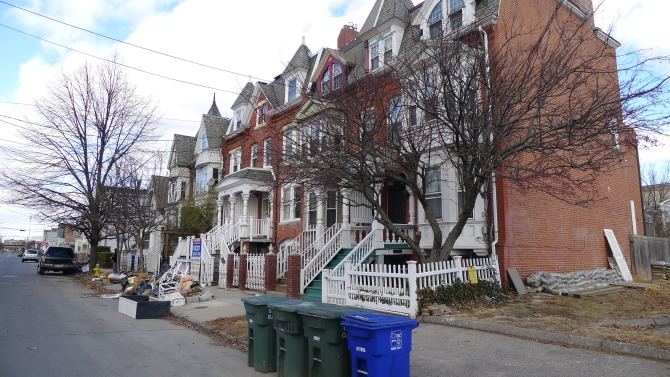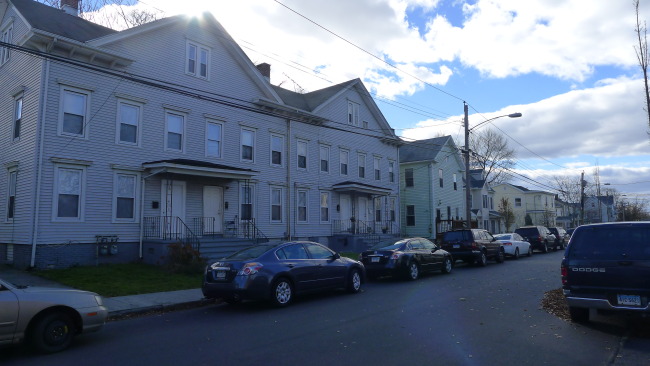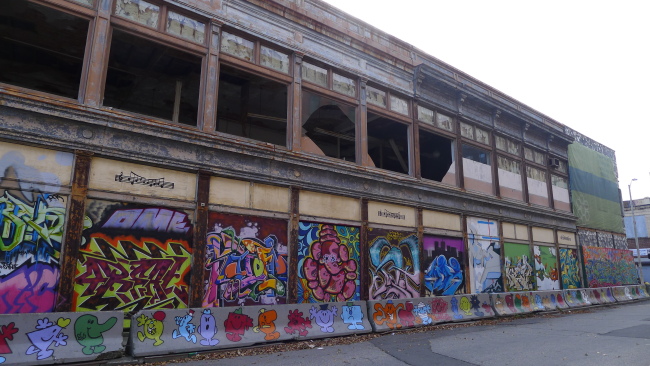This week's series began yesterday. You never know what you'll find here at Maggie's. America has plenty of Bridgeports these days. We'll have a daily Bridgeport post this week.
Bridgeport, CT (settled 1639 as "Newfield") was a boom town from around 1800 until the end of WW 2. Lots of farming in the back country, fishing, shipping and ship-building on the harbor, and, at its peak, over 500 factories. "Help wanted" signs everywhere.
Few people know that Bridgeport was the first city in America with an auto industry.
Farmers, factory workers, a good share of prosperous folk, tons of Polish, Irish, and Italian immigrants and then southern blacks attracted to jobs during the war, grand theaters, fancy stores, and of course, PT Barnum (who Walt Kelly yclept PT Bridgeport). Today, Bridgeport is about 40% recent Hispanic immigrants, 30% Black, and the rest are various kinds of white.
There has been no gentrification of downtown because there are few jobs and not much to do. Well, nothing to do. The weekend streets, empty of traffic and foot traffic except for the occasional hoodie, give a sense of desolation but not menace. There is no critical mass of activity, which has all moved to the suburbs to escape Blue City decay and taxes. (It's Obamaville for sure. In the previous election, just enough uncounted paper votes were mysteriously discovered in bags in a Bridgeport school basement to turn the election over to a Democrat CT governor days after good Repub Tom Foley appeared to have won the election.)
The city's heyday was probably between 1840 and the late 1940s - a century. In today's post-industrial northeast, the town's population is down to around 144,000, and many of the old factories are now vacant lots and the rest are rotting hulks. Even the old Bridgeport Post-Telegram is now the "Connecticut Post." With the decline of the town's manufacturing and farming base - its main bank used to be Mechanics and Farmer's Savings Bank - corrupt politicians, high taxation, criminals, drugs, welfare recipients, and mob influence have been feeding off the carcass of this failed old Blue State city.
This once-proud city, with abundant advantages, did not deserve this fate. Such bountiful towns are like the third world now.
The main businesses in town now seem to be government services, hospitals, and law, since it's the legal and court center of prosperous southern Connecticut and remains Connecticut's largest urban center. Oh, it also has the woebegone and marginal University of Bridgeport which until recently was owned by the Moonies and one which few would attend given any choice at all. Lots of foreign students desperate for an American degree of any sort.
Nobody visits downtown Bridgeport as tourists except me and a couple of my kids on an urban exploration jaunt last weekend. Well, also visitors taking the Port Jefferson ferry or going to Bridgeport Bluefish games. (They have a decent government-looking transportation hub, with the bus station, the Boston - Washington DC train station, I-95, and the ferry all within walking distance.)
During our tourism, we stopped for a pleasant lunch at The Creek in the Black Rock section of town. They had Palm on tap and the place was full of people. I'm told another good popular joint in the neighborhood is Harborview Market. I'll have to try that next time I'm in the area.
A few of my pics:
A cute old half-block (rest of the block demolished at some point, probably in "urban renewal" aka "Negro Removal" in the 1960s) in Bridgeport's South End, with garbage from Sandy's flooding.

Most of the in-town residential areas look like this. Typical northeast workingman's dwellings from the 1880s-1920s. Cheap housing now, but too-high property taxes for the people who might otherwise afford them. When the taxes are higher than a mortgage, it's not attractive. It leads to a downward, death spiral. The poorer it becomes, the more taxes are raised for government "services." Then voters vote with their feet.

Building on the corner of Main St, a block or two from the big new RBS (Royal Bank of Scotland, for those of you in Yorba Linda) bulding - doubtless located with generous multi-year tax breaks. The graffiti is really pretty well-done:



A boom town, but not anymore. It's Bridgeport Week at Maggie's Farm: Today, Bridgeport is about 40% recent Hispanic immigrants, 30% Black, and the rest arevarious kinds of white. There has been no gentrification of downtown because there are few...
Tracked: Nov 28, 11:19